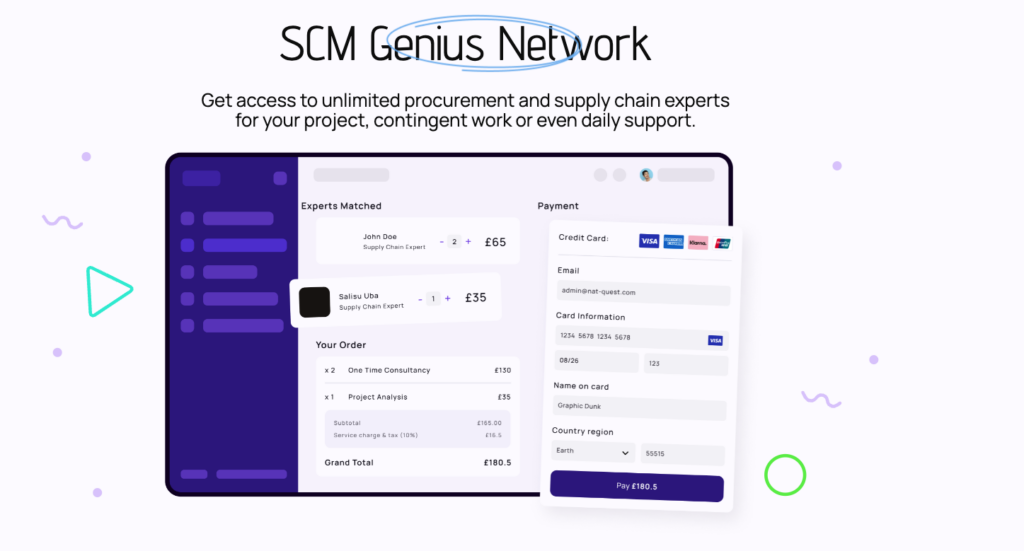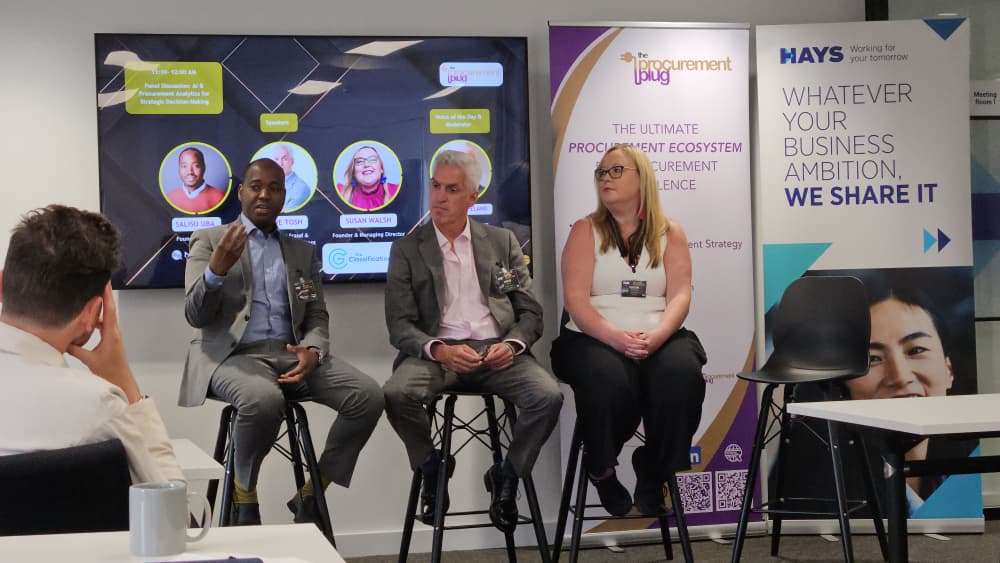NatQuest SCM Genius Team – 2nd April 2025
Organisations face increasing pressure to manage value, cost, and risk across extended supply chains. As a result, procurement and commercial teams—historically separate in role and focus—are now required to work in closer alignment. The convergence of these functions is not merely operational; it is strategic. Organisations that integrate commercial and procurement capabilities are more likely to secure long-term value from supplier relationships, navigate contractual risk, and respond effectively to market volatility.
Defining Procurement and Commercial Functions
Although the terms “commercial” and “procurement” are often used interchangeably in some industries, they refer to distinct but complementary disciplines.
- Procurement is primarily concerned with the acquisition of goods and services, supplier relationship management, cost control, and compliance with sourcing policies. It plays a pivotal role in identifying value across the supply chain.
- Commercial management refers to the broader oversight of contracts, pricing, revenue models, and risk. It ensures that business agreements deliver the intended financial and operational outcomes.
According to the World Commerce & Contracting (formerly IACCM), commercial management “applies commercial principles to the management of contracts and business relationships to maximise financial and operational performance and minimise risk.”¹ In contrast, the Chartered Institute of Procurement & Supply (CIPS) defines procurement as “the process of acquiring goods, works and services from third parties,” emphasising total cost of ownership, sustainability, and ethical sourcing.²
These functions have traditionally operated in parallel. However, modern business challenges demand that they become more integrated.
Why Alignment Matters More Today

Several trends are driving the need for stronger alignment between procurement and commercial teams:
- Complex Contract Structures
Deals are increasingly structured around outcomes rather than inputs. Performance-based contracting, risk-sharing models, and joint ventures require commercial and procurement professionals to collaborate from the outset to develop coherent structures. - Global Supply Chain Risk
Disruptions related to geopolitical conflict, pandemics, and climate-related events have elevated the importance of supplier resilience and contract agility. In such contexts, commercial oversight is essential to reassess contractual obligations, trigger appropriate clauses, and manage disputes. - Digital Transformation
Technology is changing how value is delivered in supplier relationships. Data analytics, AI-based decision tools, and blockchain solutions require new governance models that combine contractual rigour with sourcing agility. - Margin Compression and Value Optimisation
With cost pressures intensifying, organisations must move beyond cost-cutting. They must optimise commercial levers such as payment terms, volume discounts, service levels, and innovation incentives—many of which cut across procurement and commercial boundaries. - Sustainability and ESG Requirements
Regulatory and stakeholder expectations demand more than compliance. Companies are now held accountable for supplier practices. Commercial terms must embed sustainability targets, while procurement ensures that suppliers deliver against them.
In this context, the old model—where procurement runs a tender and commercial steps in only during contract review—is no longer viable.
Capability Requirements in a Converged Model
The modern procurement and commercial professional must possess a blend of skills that span sourcing, finance, legal, and strategic planning. Below is a summary of the core capabilities required in each role, and where they intersect:
| Capability | Procurement | Commercial | Shared |
| Market analysis | ✓ | ✓ | |
| Supplier relationship management | ✓ | ✓ | |
| Contract negotiation and drafting | ✓ | ✓ | |
| Commercial modelling (cost, price, incentives) | ✓ | ✓ | ✓ |
| Regulatory and legal awareness | ✓ | ✓ | |
| Risk assessment and mitigation | ✓ | ✓ | ✓ |
| Stakeholder engagement | ✓ | ✓ | ✓ |
Commercial professionals must understand supplier dynamics and the implications of sourcing strategies. Procurement professionals must grasp the contractual and financial ramifications of supplier relationships. As CIPS notes, procurement’s role in value creation is now as important as its cost control function.²
From Commercial Processes to Commercial Strategy
Many organisations conflate having a commercial strategy with simply managing commercial processes. The distinction is important.
- Commercial processes include standardised contract templates, pricing schedules, and basic risk registers. They are necessary but insufficient.
- A commercial strategy, by contrast, defines how the organisation structures deals to drive competitive advantage. It addresses questions such as:
- Where do we assume or transfer risk?
- What pricing models best align supplier incentives with business outcomes?
- How do we balance cost, service, innovation, and sustainability in supplier selection?
- Which strategic suppliers warrant long-term partnerships?
Strategy demands deliberate choices about trade-offs and business models. It also requires active collaboration between commercial and procurement leaders.
Examples of Integrated Practice
1. Outsourcing Technology Services
A multinational energy firm seeks to outsource its IT infrastructure.
- Procurement manages the market engagement, supplier due diligence, and cost modelling.
- Commercial leads the design of a performance-based agreement, including service levels, penalties, and IP provisions.
The result is a contract that aligns performance incentives with business continuity goals.
2. Managing Supply Chain Disruption
A UK-based manufacturer faces component shortages due to a supplier insolvency in Eastern Europe.
- Procurement identifies alternative suppliers and analyses switching costs.
- Commercial assesses force majeure implications and negotiates revised terms with customers downstream.
Together, they protect the firm’s contractual position and restore operational stability.
3. Innovation Partnership
A retail group partners with a logistics technology firm to co-develop AI-enabled route optimisation tools.
- Commercial structures the IP-sharing model, revenue split, and exit terms.
- Procurement manages the sourcing process, onboarding, and performance monitoring.
This collaboration combines innovation with contractual clarity.
Get access to unlimited procurement and supply chain experts for your project, contingent work or even daily support.

Towards a Unified Commercial Operating Model
The convergence of commercial and procurement is no longer optional; it is a business imperative. Organisations that separate these functions risk inefficiencies, misaligned incentives, and missed opportunities.
As market volatility and customer expectations increase, businesses must build integrated teams that bring together the best of procurement—market intelligence, supplier management, cost control—with the best of commercial—contractual acumen, risk analysis, and strategic modelling.
This shift will require new leadership models, updated governance structures, and a clear commitment from C-suites to treat sourcing and contracting not as administrative tasks, but as core strategic levers.
Sign Up today as a Procurement and Commercial Expert to offer your services Now:

References
- World Commerce & Contracting. (2023). What is Commercial Management?
https://www.worldcc.com/About/What-is-Commercial-Management - Chartered Institute of Procurement & Supply (CIPS). (2022). CIPS Global Standard for Procurement and Supply.
https://www.cips.org/knowledge/procurement-topics-and-skills/cips-global-standard




